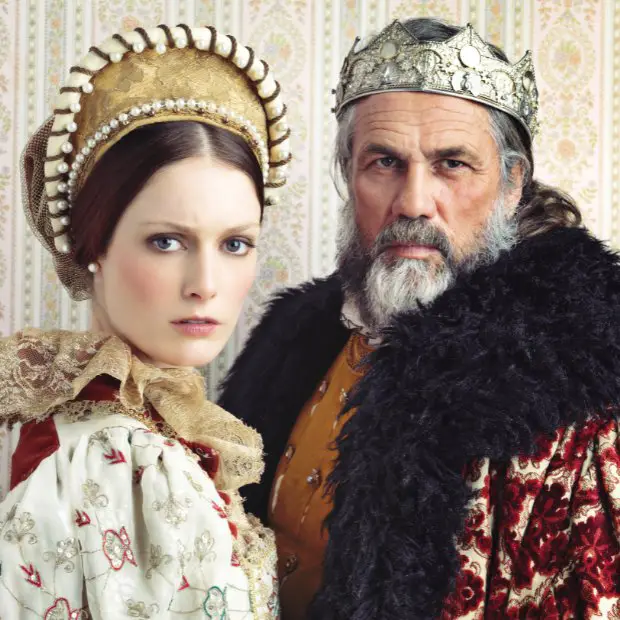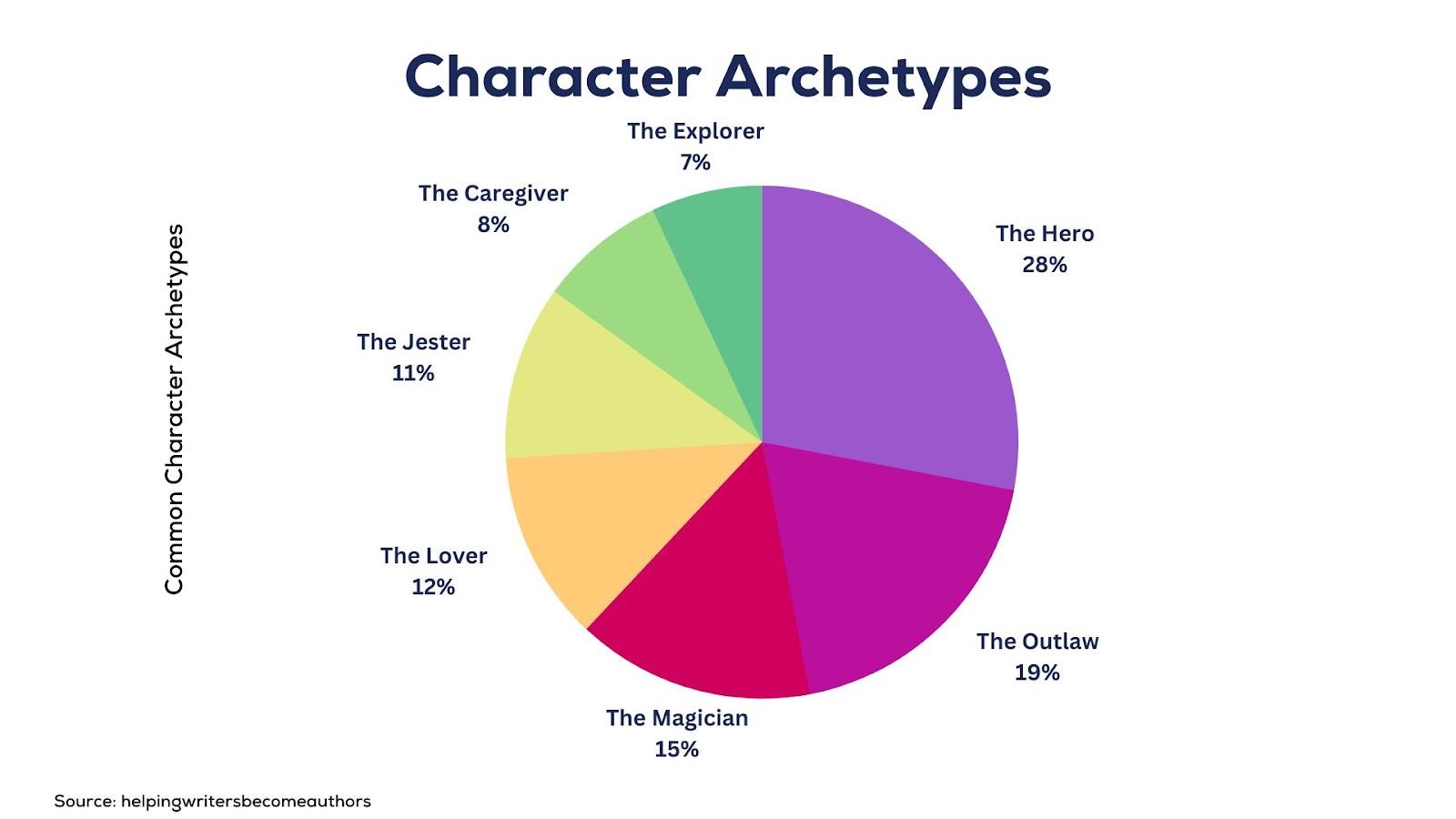
Characters are the heart of every story. Whether in novels, films, or articles, well-crafted characters often leave a more lasting impression on audiences than the plot itself.
Their goals, motivations, and conflicts shape readers’ experiences, drawing them into the narrative and making it truly unforgettable. In this comprehensive guide, we’ll explore the key elements of crafting multi-dimensional, engaging characters that elevate your stories to new heights.
Here are the top ways to craft memorable characters in your stories:
1. The Essence of Character Development
At its core, effective character development is about connecting your audience to the people in your writing on a deeper, more meaningful level. Rather than just describing a basic character concept, you must bring that individual fully to life in your readers’ minds. When a story is centered around a character-driven narrative rather than simply relaying information, it forges an emotional bond between the reader and the story. Through empathizing with the characters, audiences become invested in their journeys, which makes for a far more engaging and memorable piece.
Example:
In To Kill a Mockingbird by Harper Lee, Scout Finch begins as an innocent child. As she witnesses the racial injustices in her town, she matures, developing a deeper understanding of morality and human nature.
F. Scott Fitzgerald: “Begin with an individual, and before you know it you have created a type; begin with a type, and you find you have created – nothing.”

What fears, motivations, and past traumas drive this villain to his choices?
2. Establishing Character Goals and Motivations
Every well-rounded character is driven by clear goals and underlying motivations. Their goals are what they want to achieve or obtain throughout your story. These goals can be external, relating to the plot, or internal, relating to their emotional needs. For example, a character’s external goal may be to solve a mystery they’ve become involved in. Their internal goal could be to overcome past trauma that is hindering their relationships. When establishing goals, also consider the character’s motivations – their reasons for wanting to achieve these aims. The “why” behind their actions. Digging deeper into motivations makes characters more realistic and relatable. By constantly revisiting why your character behaves as they do, you can ensure their actions organically flow from their established goals and motivations.
Example:
In The Great Gatsby by F. Scott Fitzgerald, Jay Gatsby’s external goal is to win back Daisy Buchanan. His underlying motivation is his belief that he can recreate the past and secure a happy future with her.
Ernest Hemingway: “When writing a novel a writer should create living people; people, not characters. A character is a caricature.”
3. The Role of Backstories in Shaping Characters
While character goals drive the events of your article forward, their past experiences often shape those aspirations. Crafting a rich backstory provides context for your character’s personality, relationships, motivations, and decisions – making them feel like a real, complete person. Relevant details from a character’s history that directly impact the events of your article help audiences understand what formed them. Subtle references to impactful memories also make their emotions and behaviors more believable.
Example:
In Harry Potter by J.K. Rowling, Severus Snape’s animosity towards Harry is rooted in his complicated past with Harry’s parents, which shapes his actions throughout the series.
George R.R. Martin: “I think the best stories always end up being about the people rather than the event, which is to say character-driven.”
4. Physical Descriptions vs. Emotional Depth

Of course, visual cues can help readers picture your characters. Physical descriptions like age, appearance, race, and style of dress all convey information. However, compelling characters are defined by far more than looks alone. The breadth and depth of their inner emotions, and the way they respond to events in your article, are what truly resonate with readers. According to the basics of what are literary elements, a character’s personality traits, emotions, and relationships are crucial elements in crafting an impactful story. While visuals provide the outline, a character’s inner goals, motivations, conflicts, and change arc are what color them in, giving them substance. Who they are matters infinitely more than what they look like.
Example:
Tyrion Lannister in Game of Thrones by George R.R. Martin is described as a dwarf with a unique appearance, but it’s his intelligence, wit, and internal struggles that truly define him and resonate with readers.
John Steinbeck: “And this I believe: that the free, exploring mind of the individual human is the most valuable thing in the world. And this I would fight for the freedom of the mind to take any direction it wishes, undirected.”
5. The Importance of Flaws and Imperfections
Flaws and imperfections allow readers to relate to characters as complete human beings, rather than ideals. As the saying goes, “perfect” characters are neither interesting nor memorable. We all have impossible goals or tasks where our resolve is tested by internal obstacles – fears, insecurities, trauma, personality flaws. Characters should face the same challenges. Give them fears to overcome, and lessons to learn. By mapping out flaws that organically tie back to your characters’ goals, you create opportunities for authentic growth and drama. These flaws act as emotional plot points in your narrative.
Example:
Elsa from Frozen struggles with fear and the responsibility of her powers, which both hinder and propel the movie’s plot.
E.M. Forster: “The test of a round character is whether it is capable of surprising in a convincing way.”

Diving beneath the surface: What strengths, vulnerabilities, and aspirations lie behind her radiant exterior?
6. Dynamic vs. Static Characters
Not all characters are created equal when it comes to change. Some remain consistent throughout the story, while others undergo a dramatic transformation. Static characters essentially stay the same from beginning to end. Their personality, goals, and overall role in your story remain largely unchanged. Static characters are excellent supporting figures who ground more dynamic main characters. Dynamic characters experience significant change and evolution throughout your article. These arcs are fueled by their internal conflicts and character development. Dynamic characters are almost always central figures in a story. Understand the roles you want your characters to play and tailor them appropriately. Mixing static and dynamic characters provides balance in your articles.
Example:
In Pride and Prejudice by Jane Austen, Elizabeth Bennet undergoes significant growth in her understanding and judgments, making her a dynamic character, while Mr. Collins remains largely unchanged, serving as a static character.
Isabel Allende: “Write what should not be forgotten.”
7. The Power of Relationships in Character Development
Relationships are powerful vehicles for revealing different aspects of characters that may not otherwise emerge. Through their various interactions, you can showcase roles they play beyond the main storyline – parent, child, friend, mentor, student – rounding them out. Relationships are also excellent sources of conflict. Challenge characters by making them confront fears, insecurities, or differences between themselves and those they connect with. Doing so exposes new flaws and opportunities to grow.
Example:
Frodo Baggins and Samwise Gamgee’s friendship in The Lord of the Rings by J.R.R. Tolkien reveals depths of loyalty, sacrifice, and resilience.
Kurt Vonnegut: “Make your characters want something right away—even if it’s only a glass of water. Characters paralyzed by the meaninglessness of modern life still have to drink water from time to time.”
8. Conflict: The Catalyst for Character Growth
Speaking of conflict, it is essential for meaningful character development. Without obstacles in their way, characters have no opportunity to be tested, confront challenges, and evolve. External conflicts physically prevent characters from achieving their goals. Internal conflicts represent psychological barriers characters must overcome. Both are integral storytelling tools. The tension between what a character wants and the conflicts barring their path is what keeps readers engaged. Obstacles, and how characters respond, move the story forward and reveal who they truly are.
Example:
In The Catcher in the Rye by J.D. Salinger, Holden Caulfield’s external conflicts with society mirror his internal struggle to come to terms with adulthood and loss.

Delve into a character’s past to uncover the roots of present conflicts. History shapes reactions, making moments of tension more believable.
9. The Transformation Arc: From Beginning to End
A character’s transformation over a story’s progression is called their character arc. This gradual evolution is key to storytelling. At the beginning, show characters in their “default” state before change occurs. What events then propel their internal and external journeys? How do they navigate challenges along the way? What particular turning points alter their path? Finally, illustrate how they apply lessons learned to arrive at the article’s conclusion having grown or evolved. This satisfying character arc is the heart of impactful storytelling.
Example:
Walter White from the TV series Breaking Bad starts as a mild-mannered chemistry teacher but undergoes a dramatic transformation, driven by pride and desperation, to become a drug lord.
10. Ensuring Consistency in Character Behavior
As characters experience events and evolve, their behaviors, speech patterns, and personalities must remain consistent. Drastic, unexplained changes feel jarring and inauthentic. Straying from established characterization breaks the reader’s trust. Each action and response should organically flow from what you’ve previously established about who a character fundamentally is and what motivates them. Consistency provides continuity between their past, present, and future. By avoiding, out-of-character moments, their entire arc will feel believable.
Example:
Katniss Everdeen in The Hunger Games by Suzanne Collins consistently acts to protect her loved ones, making decisions that align with her established protective and resourceful nature.
Exercises & Prompts for Character Development
Crafting well-rounded, believable characters requires both understanding and practice. To refine your character development skills, consider engaging in these exercises and prompts:
- Character Interview: Pretend to interview your character. Create a list of 20 questions that dig deep into their history, preferences, fears, and dreams. This not only makes you think about their background but also how they would respond in their voice.
- Role Reversal: Take two characters from your story and switch their roles. How would the story change? How would they react to the challenges and experiences of the other?
- Letter Writing: Have your character write a letter to someone significant from their past. It could be an old friend, a lost love, or someone they have a conflict with. What would they say?
- React to a Crisis: Place your character in an unexpected crisis, unrelated to your story’s main plot. How would they handle it? This exercise reveals hidden depths and strengths.
- Daily Routine: Describe a day in the life of your character when nothing particularly exciting happens. This can shed light on their habits, preferences, and the mundane details that make them more relatable.
- Two Truths and a Lie: Think of two truths about your character and one lie. Share them with someone else and let them guess the lie. This can help you hone in on surprising and engaging character traits.
- Character’s Ad: Write a personal ad for a dating site from your character’s perspective. What would they highlight about themselves? What are they looking for?
- Character Evolution Timeline: Map out the major events in your character’s life leading up to your story. How did each event shape their beliefs, fears, and desires?
- Meet the Antagonist: If your story has a clear antagonist, write a scene where your character and their antagonist have a casual conversation in a neutral setting. What do they discuss?
- A Day in Someone Else’s Shoes: Choose a day in the life of someone entirely different from your character and describe how they would manage and feel in that role. This can enhance your character’s empathy and depth.
Character Development Checklist:
The Essence of Development
- Connect with the audience emotionally.
- Go beyond basic character descriptions.
- Make characters truly come alive in the reader’s mind.
Goals and Motivations
- Define clear external and internal goals.
- Establish reasons behind their goals (the “why”).
Backstories
- Craft a rich history for your character.
- Include details that impact the current events of your story.
- Reference past experiences that shape current behaviors.
Physical vs. Emotional Descriptions
- Include visual cues for character appearances.
- Prioritize emotional depth and personality traits.
- Ensure inner goals and motivations are clear and compelling.
Flaws and Imperfections
- Make characters relatable with authentic flaws.
- Ensure flaws relate to the character’s goals.
- Create opportunities for growth through their imperfections.
Static vs. Dynamic Characters
- Decide on the role of each character.
- Ensure a mix of static (unchanging) and dynamic (evolving) characters.
The Power of Relationships
- Showcase different roles through relationships (e.g., parent, friend, mentor).
- Use relationships as sources of conflict and growth.
Conflict as a Catalyst
- Incorporate both external and internal conflicts.
- Ensure conflicts challenge the character’s goals.
- Use obstacles to drive the story forward.
The Transformation Arc
- Start with characters in their “default” state.
- Identify key events that shape their journey.
- Highlight turning points.
- Conclude with how they’ve evolved by the story’s end.
Consistency in Behavior
- Ensure actions and responses align with established characterization.
- Avoid jarring, unexplained changes in behavior.
Further Resources on Character Development:
- “Creating Character Arcs” by K.M. Weiland: An insightful guide on how to craft compelling character transformations that resonate with readers.
- “The Art of Character” by David Corbett: Delve deep into the craft of character creation, exploring motivation, conflict, and the human psyche.
- “The Emotional Craft of Fiction” by Donald Maass: Discover how to evoke powerful emotions in readers through your characters’ journeys.
Frequently Asked Questions:
Why is character development crucial in articles and not just fiction?
Character development adds depth, emotion, and relatability that engages readers far more than just conveying information. Well-crafted characters make your content memorable.
How can I ensure that my character’s flaws don’t overshadow their strengths?
It’s about balance. Flaws should create meaningful growth opportunities, but not dominate overall. Focus more on the obstacles they face pursuing their goals.
Can I base my characters on real people?
While real people can inspire characters, it’s vital to fictionalize them, making them unique. Never infringe on anyone’s privacy or rights.
Key Takeaway
By incorporating multi-dimensional characters into your articles, you transform straightforward information into an immersive story that resonates with readers. Use the techniques outlined here to craft protagonists that leap off the page, powerfully capturing your audience’s imagination. Next up, you may want to explore a guide to the top fantasy book publishers.
Hey there, welcome to my blog! I'm a full-time entrepreneur building two companies, a digital marketer, and a content creator with 10+ years of experience. I started RafalReyzer.com to provide you with great tools and strategies you can use to become a proficient digital marketer and achieve freedom through online creativity. My site is a one-stop shop for digital marketers, and content enthusiasts who want to be independent, earn more money, and create beautiful things. Explore my journey here, and don't forget to get in touch if you need help with digital marketing.

